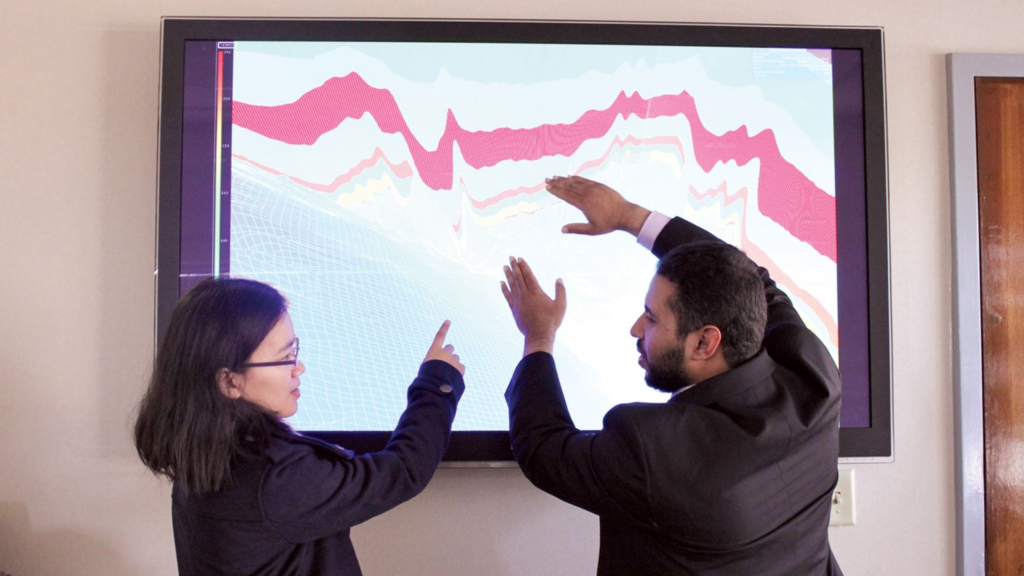Showcasing Saudi Aramco’s first in-house basin simulator

Saudi Aramco’s first in-house basin simulator was recently introduced to our upstream scientists, showcasing the capabilities of the powerful new simulator, which is designed to reveal the hidden journey of oil to its present day locations to support explorationists in their discovery of new hydrocarbon deposits.
Our TeraPOWERS Technology Team (TPT), part of the EXPEC Advanced Research Center, presented the basin simulator to the user community during a pair of workshops held at the Upstream Professional Development Center. The simulator was launched to simulate the geologic evolution of the Arabian sedimentary basin at an unprecedented level of detail, revealing the hidden journey of oil.
The technology is unique because it can handle extremely large models that are required to simulate the petroleum systems of the Arabian Peninsula. It also allows the integration of geological information from reservoirs at an unprecedented resolution.
Communication and collaboration with our proponents is preeminent in our research undertakings. This powerful technology continues to be developed to deliver optimal performance throughout its future.
Ali Dogru
The present and the future
The workshops concluded with an open discussion regarding the basin simulator roadmap. Basin workshop attendees provided their feedback to the TPT team, which will use the customer input to update the 2017 working plans based on the project roadmap.
A mid-year release of the basin simulator includes a Hybrid Darcy migration, which will generate migration pathways for hydrocarbons over millions of years more accurately, allowing explorationists to drill for potential trapped hydrocarbons along the migration pathways for additional reserves.
The next phases will include additional graphical software such as Petrel workflows and Lithology and Kinetic Editors, which provide user graphical tools to prepare and input data available in the company database easily, and graphically input and edit erosion and kinetic data, thereby saving man-hours.





 Email: info@cyber-gear.com
Email: info@cyber-gear.com